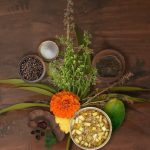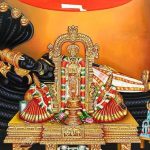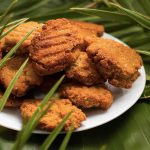In Hindu worship, rituals are deep acts filled with symbolism, devotion, and ancient knowledge. Among these sacred practices, the offering of Panchamrita is a deeply valuable tradition.
This divine mix of 5 natural ingredients has been used for centuries to honor the gods, purify the spirit, and invoke blessings. It’s more than just an offering; it is a powerful symbol of balance, purity, and transformation that connects devotees directly to the divine presence.
The Sacred Blend of 5 Nectars
As the name suggests, Panchamrita is made with just 5 ingredients: milk, curd, honey, ghee, and sugar. Each one is carefully chosen not just for taste, but for what it represents.
- Milk stands for purity and nourishment
- Curd brings strength and prosperity
- Honey adds sweetness and unity
- Ghee gives sacred energy and vitality
- Sugar brings joy and a sense of celebration
Together, these five form a powerful mixture that is used in Abhishekam, a ritual of cleansing the deity, and later distributed as prasad, the sacred food shared with devotees.
Where Did It Come From?
The word Panchamrita means “five nectars of immortality”. Ancient scriptures describe it as an offering that pleases the gods and brings blessings to the devotees. Over time, it became an inseparable part of temple rituals and festivals, especially those dedicated to Lord Shiva, Vishnu, and Krishna.
A Symbol of Wholeness and Surrender
Panchamrita isn’t just an ordinary offering. It reminds us that balance, harmony, and devotion matter more than anything material. Each ingredient has its own strength, but only when they come together does the mixture become complete.
Why It Still Matters Today
Even now, people prepare Panchamrita at home during pujas. In some places, Tulsi leaves or cardamom are added to enhance its spiritual and healing value. It’s a blend that feeds the spirit, connects us with the divine, and reminds us of life’s simple, sacred joys.
So next time you hold a spoonful of Panchamrita, take a moment to experience a taste of something eternal.
Feature Image Credit: Pinterest.




